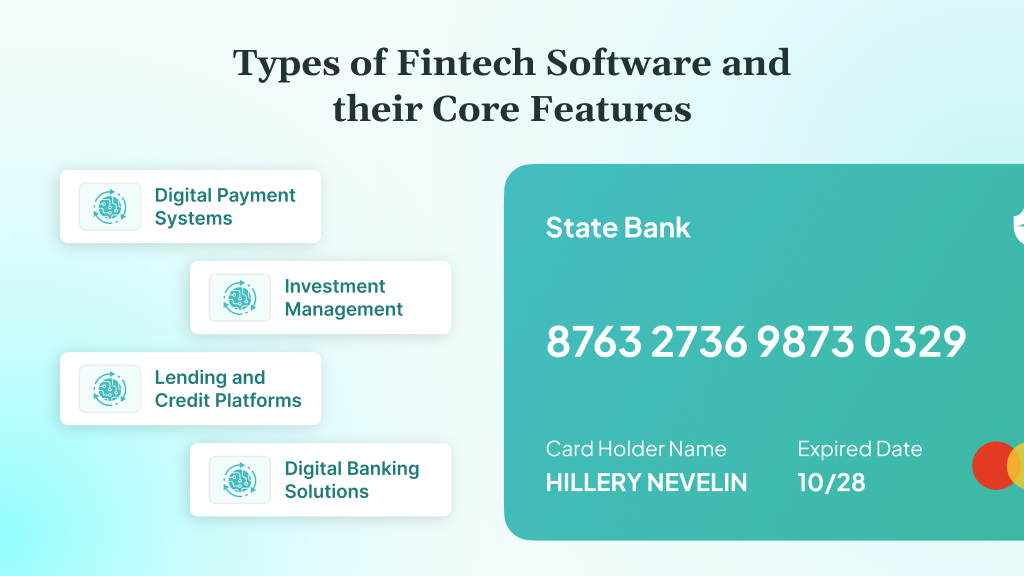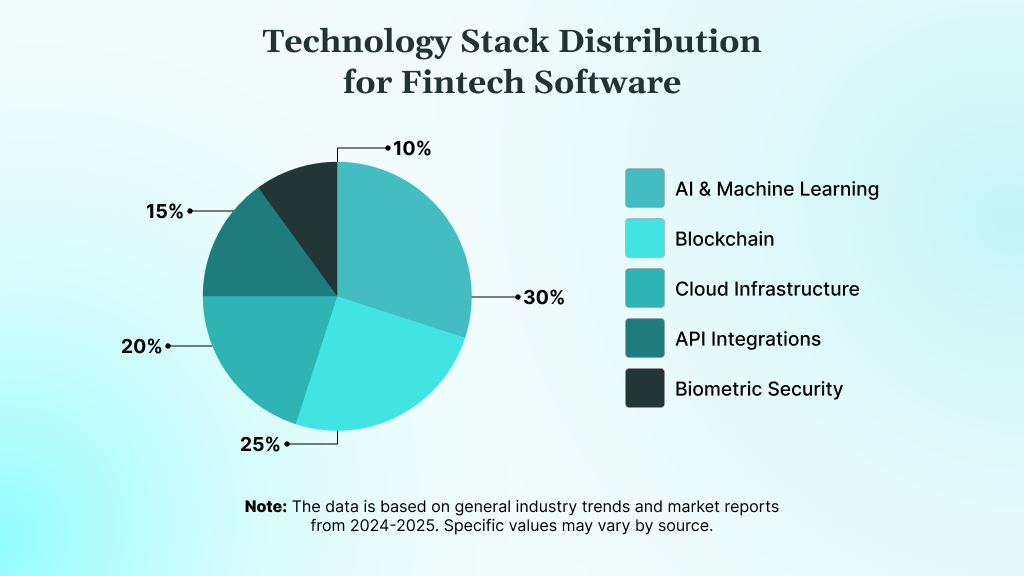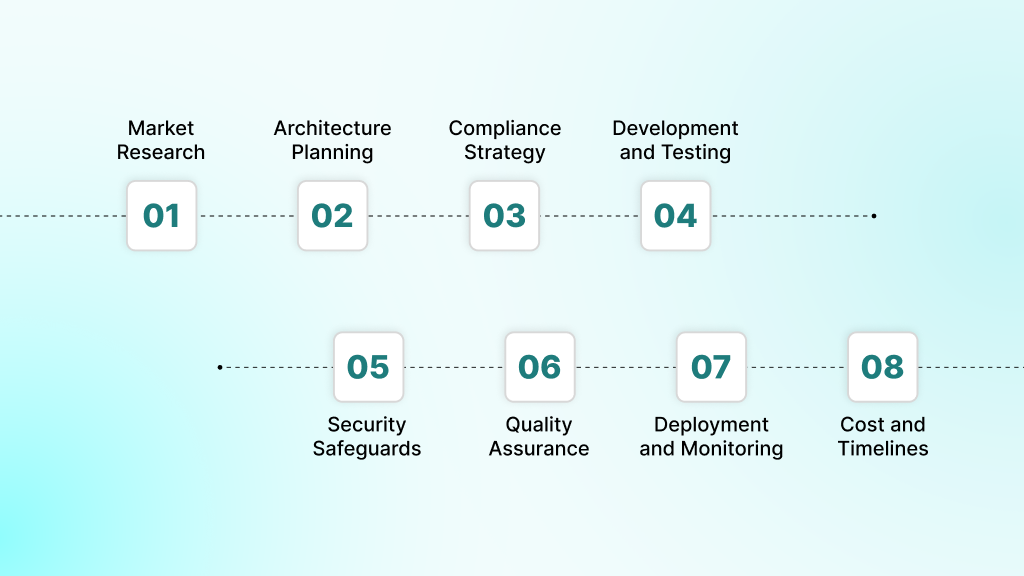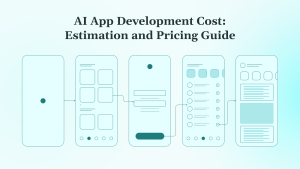Fintech software development is now a core business priority for banks, lenders, and financial teams. Internal platforms handle everything from real-time payments to compliance automation, and they need to be fast, secure, and built to scale.
As these systems grow more complex, so do the risks. Shifting regulations, brittle integrations, and mounting technical debt can quietly derail even well-planned initiatives. Without a clear development strategy, teams struggle to deliver reliable software that keeps up with business needs.
A structured approach changes that. With the right architecture, tools, and process discipline, fintech software can support long-term growth, simplify audits, and reduce operational risk across the board.
This guide provides a step-by-step approach to fintech software development in 2025. It covers technology choices, compliance layers, and proven strategies to build systems that last.
Key Takeaways
-
Fintech software must deliver on security, compliance, scalability, and real-time performance from day one.
-
AI, cloud, blockchain, and API integrations form the core tech stack behind modern financial applications.
-
Custom-built systems outperform off-the-shelf tools when products require strict regulatory alignment or real-time processing.
-
Costs rise quickly without clear specs, stable architecture, or a compliance plan. The early structure reduces risk and rework.
-
Building with the right fintech software development company ensures product-market fit, audit readiness, and long-term agility.
What Is Fintech Software Development?
Fintech software development is the process of building digital products that deliver financial services. This includes mobile banking apps, peer-to-peer lending platforms, robo-advisors, and digital wallets. These tools enable companies to offer faster, safer, and more convenient ways for people to manage their finances.
Behind the scenes, these systems handle real transactions, adhere to strict regulatory rules, protect sensitive data, and remain reliable under heavy usage. That combination of pressure and precision makes this kind of development more demanding than most.
Many of these products are directly integrated with banking systems, payment processors, credit bureaus, or investment platforms. Every part of the stack must work quickly and securely, as people trust the product with their money and personal information.
Why Fintech Software Is Crucial to the Modern Economy
Fintech software powers the financial systems that modern businesses and consumers rely on every day. From digital payments to lending platforms, it is the backbone of how money moves in a digital-first economy.
Over the past several years, nearly every part of life and business has shifted online. This acceleration demands financial systems that are fast, secure, and always available. Companies can not afford to rely on manual processes or disconnected tools; fintech software brings everything into one streamlined, scalable system.
It is crucial because it solves what legacy systems can not: speed, personalization, and reach. Businesses gain access to smarter financial tools, faster operations, and innovative models such as embedded finance or alternative lending. Consumers now have easier access to banking, investing, and credit, often without ever needing to visit a branch.
At a macro level, fintech software enables economic inclusion, reduces operational costs, and creates new revenue streams.
Types of Fintech Software and Their Core Features
Fintech encompasses a wide range of applications, each designed to address a specific financial challenge. Knowing what types exist helps teams plan the right product, tech stack, and development path based on their goals.
Digital Payment Systems
Digital payment platforms facilitate electronic transactions between individuals, businesses, and financial institutions. These systems must support multiple payment methods and currencies while maintaining security and compliance standards.
Core features include:
-
Real-time transaction processing and settlement
-
Multi-currency support with automatic conversion
-
Fraud detection and prevention systems
-
PCI DSS compliance and tokenization
-
Mobile and web-based user interfaces
-
Integration with banking networks and card processors
Investment Management Platforms
Investment platforms provide tools for portfolio management, trading, and financial planning. These applications require sophisticated data processing capabilities and the integration of real-time market data to support their operations.
Core features include:
-
Portfolio tracking and performance analytics
-
Real-time market data feeds and charts.
-
Order management and execution systems
-
Risk assessment and compliance monitoring
-
Automated rebalancing and tax-loss harvesting
-
Integration with brokerage and clearing systems
Lending and Credit Platforms
Digital lending platforms streamline loan origination, underwriting, and servicing processes, enhancing efficiency and reducing costs. These systems must integrate with credit bureaus and implement sophisticated risk assessment algorithms to effectively manage credit risk.
Core features include:
-
Alternative credit scoring using AI/ML models
-
Automated document verification and processing
-
Risk-based pricing and decision engines
-
Loan servicing and payment processing
-
Integration with credit reporting agencies
-
Regulatory compliance and reporting tools
Digital Banking Solutions
Digital banking platforms provide comprehensive banking services through mobile and web applications. These systems must integrate with core banking infrastructure while providing modern user experiences.
Core features include:
-
Account management and transaction history
-
Mobile check deposit and bill pay
-
Budgeting and financial planning tools
-
Person-to-person payment capabilities
-
Integration with third-party financial services
-
Advanced security and authentication systems
Technologies Powering Fintech Development
Fintech development software comes in many forms, each designed for a specific use case, ranging from payments to lending to investing. You need to understand these categories, as they can help focus your development on real user needs and market gaps.
Beyond the types of software, the technologies that power them play a critical role in performance, compliance, and user trust. Let us examine the core technologies that shape modern fintech solutions.
AI and Machine Learning
Traditional fraud detection systems rely on static rules that miss sophisticated attacks while flagging legitimate transactions. Machine learning solves this by continuously learning from transaction patterns and analyzing hundreds of variables simultaneously to identify subtle anomalies that rule-based systems miss entirely.
Credit scoring faces similar limitations when evaluating customers without traditional credit histories. ML algorithms incorporate alternative data sources, such as utility payments and mobile usage patterns, enabling lenders to assess creditworthiness more accurately while expanding their customer base.
Portfolio management traditionally requires extensive manual analysis and frequent rebalancing decisions. AI-powered optimization processes automatically market data and individual risk profiles, rebalancing portfolios based on real-time conditions while minimizing manual intervention.
Customer service bottlenecks occur when simple inquiries tie up human agents. Natural language processing addresses this by powering chatbots that understand context and intent, handling routine questions while freeing human agents to focus on high-value interactions.
At DEVtrust, we use these tools in real-world products. Our team has developed AI systems that automate portfolio optimization, predict market shifts, and identify irregularities in transaction records, enabling clients to scale faster while maintaining compliance.
Example: JPMorgan Chase’s COIN platform processes 12,000 commercial credit agreements in seconds, reducing processing time by 99% from the previous 360,000 hours of lawyer time annually.
Blockchain and Cryptocurrency
Cross-border payments suffer from high fees, slow processing times, and multiple intermediaries. A simple international transfer typically takes 3-5 business days and incurs fees ranging from $25 to $50. Blockchain eliminates these intermediaries through direct peer-to-peer transfers, settling transactions in minutes with fees often under $1.
Traditional financial agreements often require intermediaries to ensure compliance and enforcement, which adds costs and delays. Smart contracts automate these processes by executing predetermined terms when specific conditions are met, thereby eliminating counterparty risk and reducing settlement times from days to minutes.
Asset ownership has historically been limited to whole units, which has prevented smaller investors from accessing high-value investments. Tokenization converts assets into digital tokens that can be divided into fractions, making previously inaccessible investments available to retail investors.
Example: Visa’s crypto-linked cards automatically convert digital currencies to fiat at the point of sale, enabling spending at 80 million merchants worldwide while maintaining blockchain security benefits.
Biometric Security Technology
Password-based authentication creates vulnerabilities because users choose weak passwords or reuse them across accounts. Biometric authentication uses unique biological characteristics like fingerprints, facial recognition, and voice patterns that cannot be easily replicated or stolen.
Even with correct credentials, determining if the legitimate user is accessing the account remains challenging. Behavioral biometrics analyze user patterns like typing rhythm and touchscreen pressure, detecting account takeovers by identifying unusual behavior patterns even when attackers have valid credentials.
Basic biometric systems can be fooled by photos or recordings. Liveness detection prevents these attacks by confirming that samples come from live individuals through depth sensing, texture analysis, and micro-movement tracking.
Example: Bank of America’s biometric authentication system reduced password-related support calls while improving both security and user experience through fingerprint and facial recognition login.
Cloud Infrastructure
Traditional on-premises infrastructure requires significant upfront investment and often results in underutilized resources or insufficient capacity during peak periods. Cloud computing provides auto-scaling capabilities that adjust resources based on demand, handling traffic spikes automatically while controlling costs through pay-as-you-use pricing.
Monolithic applications become difficult to maintain and scale as fintech companies grow. Microservices architecture breaks complex applications into independent services that can be developed and deployed separately, enabling faster development cycles and more targeted scaling.
Single-location deployments create availability risks that can result in complete service outages. Multi-region cloud deployment ensures high availability through geographic redundancy, automatically routing traffic to healthy regions when data centers become unavailable.
Example: Capital One’s complete AWS migration eliminated its last data center in 2020, reducing infrastructure costs while improving deployment speed.
Open Banking APIs
Financial institutions traditionally operated in silos, making it difficult for customers to get a complete financial picture or access innovative services. Open banking initiatives require banks to provide standardized APIs that enable third-party access to customer data with explicit consent, creating opportunities for fintech companies to build innovative services.
Budgeting tools previously required users to manually input data or share login credentials with third parties. Account information APIs enable secure access to transaction history and spending patterns, powering automated budgeting tools and personalized financial advice platforms.
Traditional payment methods involve multiple intermediaries, each adding fees and processing delays. Payment initiation APIs allow third-party applications to trigger payments directly from customer bank accounts, enabling new payment methods without separate payment processors.
Steps to Build a Fintech Product in 2025
Successful fintech product development requires systematic planning and execution that addresses technical, regulatory, and business requirements. The process involves multiple phases that build upon each other to create comprehensive financial solutions.
Market Research and Validation
Understanding your target market drives every subsequent development decision. Conduct comprehensive user research to identify pain points, preferences, and willingness to pay for your proposed solution.
Analyze competitor offerings to identify gaps and opportunities for differentiation. This includes evaluating both direct competitors and adjacent financial services that address similar user needs.
Validate market demand through prototyping and user testing before committing to full development. This approach reduces risk and ensures development resources focus on features that provide real user value.
Technical Architecture Planning
Design a system architecture that supports your current requirements while enabling future growth and expansion of features. Consider scalability, security, and compliance requirements from the beginning of the design process.
Select technology stacks that provide the performance, security, and integration capabilities your application requires. This includes programming languages, databases, cloud platforms, and third-party services.
Plan integration strategies for external systems, including payment processors, banking networks, and regulatory reporting systems. These integrations often represent the most complex aspects of fintech development.
Regulatory Compliance Strategy
Start by mapping all financial regulations and data privacy laws tied to your product and target markets. Look at each jurisdiction you plan to operate in and flag requirements early; this reduces the risk of blockers later.
Align your policies, terms of service, privacy, and transaction handling with those legal frameworks. If you are operating across borders, make sure region-specific needs (like GDPR or PSD2) are addressed separately.
Bring in legal or compliance experts familiar with fintech like DEVtrust. Their input will help you stay ahead of changing rules and avoid costly surprises down the line.
Development and Testing
Use agile workflows with short, focused cycles to ship early, test quickly, and refine based on real user and stakeholder feedback.
Integrate security from the start. Code reviews, static analysis, and continuous vulnerability checks should be included in every sprint.
Plan user testing that reflects real-world conditions, including edge cases, error handling, and performance under load.
Security Safeguards
Focus on the essentials: encrypt sensitive data, lock down access with multi-factor authentication, and control who can do what within the system.
Run real-time security monitoring across your app and infrastructure. Any breach, slowdown, or suspicious behavior should trigger instant alerts.
Regular audits by security professionals ensure your defenses hold up. Threat models change, especially in fintech, so reviews should not be a one-time event.
Testing and Quality Assurance
Make QA part of your development rhythm, not a final checkpoint. That means every new feature gets unit tests, integration checks, and compliance validation.
Use automation where it saves time; regression tests, load handling, and routine security scans should all run in the background as your team ships new builds.
Build quality into your workflows with clean code, clear documentation, and version control. This makes it easier to onboard new team members and scale without tech debt.
Deployment and Monitoring
Pick deployment methods that reduce risk, like blue/green or canary rollouts. This gives you fallback options if bugs or regressions appear in production.
Set up end-to-end monitoring that tracks performance, user behavior, and security events. Visibility is what helps you react fast when things go wrong.
Keep your ops playbook tight, backup schedules, failover procedures, and recovery timelines. These are critical in fintech, where even a few minutes of downtime can have a real financial impact.
Cost and Timelines
Expect total development costs to land anywhere between $100,000 and $1M+, depending on the scope, feature set, and regulatory complexity.
Simpler apps with fewer integrations may be ready in 6 to 8 months, while full-scale platforms often require 12 to 18+ months from planning to production.
What drives the cost higher?
-
Deep compliance coverage across multiple regions
-
Third-party integrations (like Plaid, Dwolla, TransUnion, etc.)
-
Custom security infrastructure and risk logic
-
Real-time data processing or trading features
While cutting corners might save in the short term, unclear specs, rushed timelines, or underestimating compliance can turn into costly rework later. Investing time and clarity upfront pays off long-term.
Key Challenges and Compliance in Fintech Software Development
Every fintech product must meet strict legal and security standards based on where it operates and what services it offers. These rules are not optional; they shape how your software gets built, deployed, and scaled.
Teams that plan for compliance from day one avoid delays, rework, and blocked launches later. Strong compliance protects users, builds trust, and keeps your business goals on track.
The hardest part is striking the right balance: staying compliant while maintaining a fast, simple, and user-friendly product. To do that, below are some listed challenges you should be aware of:
Regulatory Compliance Challenges
Fintech applications must comply with multiple regulatory frameworks simultaneously, often across different jurisdictions. This includes financial services regulations, data privacy laws, and industry-specific requirements that vary by service type.
-
PCI DSS compliance for payment processing requires secure handling of cardholder data
-
KYC and AML regulations mandate customer verification and transaction monitoring
-
GDPR and data privacy laws require explicit consent and data portability rights
-
SOX compliance for public companies demands specific financial reporting controls
-
Basel III requirements for risk management affect capital adequacy calculations.
Security and Data Protection
Financial applications handle sensitive personal and financial data that requires comprehensive protection measures. Security breaches can result in regulatory fines, legal liability, and permanent damage to the company’s reputation.
-
Encryption requirements for data at rest and in transit using industry-standard algorithms
-
Multi-factor authentication to protect user accounts and administrative access
-
Regular security audits and penetration testing to identify vulnerabilities
-
Incident response procedures for security breaches and data compromise
-
Audit trails and logging to support forensic investigation and compliance reporting
Integration Complexity
Applications must integrate with multiple external systems, including banking networks, payment processors, and regulatory reporting systems. These integrations require ongoing maintenance and monitoring to ensure reliability.
-
API versioning and backward compatibility to maintain stable integrations
-
Rate limiting and error handling to manage third-party service dependencies
-
Data synchronization across multiple systems while maintaining consistency
-
Monitoring and alerting for integration failures and performance issues
-
Disaster recovery planning for critical system dependencies
Challenges are part of building any serious fintech product, but the good news is you do not have to figure it out alone. Book a call with our team, share your requirements and compliance needs, and we will help you plan and build the right fintech solution with confidence.
How to Choose the Right Fintech Software Development Partner
Building fintech software takes more than strong engineering. It also demands alignment across compliance, product strategy, system architecture, and user experience. While in-house teams bring business context, they often lack hands-on experience with financial-grade development.
Most generalist developers struggle with the demands of regulated environments. Fintech products need precision around data handling, risk logic, and real-time integrations, none of which leave room for error. Security standards, compliance protocols, and third-party integrations require a deeper level of technical fluency than standard app development.
If your product needs to move fast, scale cleanly, and meet industry expectations from day one, the right partner makes all the difference. What you need is a team that knows this space and developers who have solved these problems before and can guide you to perfection. But the question lies in how you will choose the right one. Well, the answer is listed below:
Evaluating Technical Expertise
Look for development partners with demonstrated experience in fintech-specific technologies and integration patterns. This includes experience with payment processors, banking APIs, and regulatory compliance frameworks.
Review the partner’s portfolio to identify similar projects and assess the quality of their implementations. Pay particular attention to security implementations, user experience design, and integration capabilities.
Evaluate the partner’s development methodologies and quality assurance processes to ensure alignment with your organization’s standards. Fintech development requires rigorous testing and validation procedures that exceed the typical standards of software development.
Assessing Financial Industry Knowledge
Fintech development partners should demonstrate a deep understanding of financial services, regulatory requirements, and industry best practices. This knowledge enables them to anticipate challenges and implement solutions that meet regulatory standards.
Look for partners who have worked with financial institutions, payment processors, and regulatory bodies. This experience provides valuable insights into compliance requirements and industry expectations.
Assess the partner’s understanding of financial concepts like risk management, fraud detection, and financial reporting. This knowledge enables them to develop solutions that meet business requirements and regulatory standards.
Now that you know what to look for in a fintech development partner, it is worth considering who checks those boxes. Instead of wasting cycles hunting for the “best” team, you could work with one that is already delivering secure, compliant, and scalable fintech solutions.
DEVtrust’s Fintech Development Expertise
Here at DEVtrust, we build fintech platforms that go beyond surface-level features. Our work spans investment management tools, automated ledgers, and AI-driven financial analytics, covering everything from infrastructure to end-user experience. The team handles integrations with leading APIs, including Plaid, TransUnion, Stripe, and Dwolla, solving the most challenging aspects of fintech backend work.
We implement AI and machine learning solutions at scale to support fraud detection, dynamic credit scoring, and market prediction, bringing enterprise-grade intelligence to consumer-facing applications. This technical depth allows us to create solutions that are smarter, faster, and more secure.
Some of our projects include
-
Quant Capital – A trading platform giving users direct access to financial markets through automation.
-
BillingZero – A contract and billing automation tool with fully integrated invoicing workflows.
-
PayVantage – A mobile lending app that approves loans fast, even for users without a credit history.
-
Rank Up Academy – A platform to manage real-time sales, commissions, and payments.
-
INFLATED – A tool for tracking inflation rates and running advanced financial analysis
However, we know that things often become complicated quickly in fintech, especially when you are trying to catch up with regulations, integrations, and timelines. It is better to talk to someone who has done it before. Schedule a consultation to discuss your fintech development requirements.
Conclusion
Fintech software development represents unprecedented opportunities for organizations ready to capitalize on digital financial transformation. The market’s explosive growth rewards companies that can deliver secure, compliant, and user-centric financial solutions.
Success requires more than technical expertise; it demands a deep understanding of financial services, regulatory compliance, and user behavior patterns specific to financial applications. The complexity of these requirements makes strategic planning and expert development partnerships crucial for project success.
Your fintech vision deserves expert implementation that addresses regulatory requirements, security challenges, and user experience expectations. The window for market entry continues narrowing as competition intensifies and regulatory requirements become more stringent.
DEVtrust’s proven expertise in fintech software development and regulatory compliance can help bring your vision to life as market-leading solutions. Our team’s experience with Plaid, Stripe, AI/ML, and comprehensive fintech platforms ensures your project meets industry standards while delivering exceptional user experiences.
Contact DEVtrust today to discuss your fintech development requirements and secure your competitive advantage in the growing fintech market.
-
Fintech Software Development Guide for 2025
Master fintech software development for 2025 with insights into AI, blockchain, regulatory compliance, and user-centric design. Start innovating today!
Contact Us





